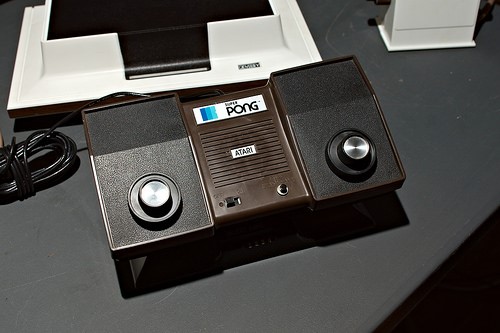Video gaming has served as a beacon of entertainment for multiple generations, and its popularity is showing no signs of slowing down. The industry’s growth has increased exponentially even in recent years, due largely to the increasing video gaming platforms accessible to gamers and the fact that gaming is no longer considered nerdy or geeky; it’s uber-cool. In fact, the video gaming industry is becoming so big that other entertainment industries such as film and music are in danger of being left trailing in its wake.
The explosion of the eSports industry, which helped video gaming become a bona fide profession, has had a significant influence in the proliferation of video gaming among young and old. According to Forbes.com, new data from Newzoo suggests eSports alone could become a billion-dollar revenue-driving industry in 2018, with revenues potentially reaching $1.65bn by 2021. Aside from eSports, there are a growing number of burgeoning video game platforms that have also helped to underpin video gaming as we know it in 2018. This article is designed to hark back to the origins of video gaming, plot the industry’s journey pre and post-Millennium and discuss some of the most recently classified video game platforms
How video gaming began

Video gaming as we know it dates back to the 1970s. The world’s inaugural commercial video game was made for the arcades by a firm called Nutting Associates. The game was called Computer Space, but very few people remember the game as one year later another game took center stage in arcades and homes around the world. The brains behind the development of Computer Space, Nolan Bushnell, then formed Atari, which developed Pong. This tennis-style game became the world’s first successful commercial video game, thanks in no small part to its simplicity and intuitive nature that allowed humans to try and outsmart the computer. It was in 1975 when Atari released a home version of Pong, becoming a phenomenal success and laying the foundations for the future concept of home video games for decades to come.
The widespread availability of consoles at home
After the success of the Atari’s home version in 1975, the Fairchild Channel F was available for sale just one year later. This was the world’s first removable gaming console, but it was again usurped by the 1977 Atari Video Computer System, which utilized removable cartridges with games pre-loaded onto the cartridges, allowing console owners to play multiple games using the same hardware. By the mid-1980s, the quality of home video gaming had plateaued somewhat. The rise of arcades and the excitement of being able to venture into a room or building with purpose-built arcade machines to play on meant that interest in home-based video game consoles dipped. That was, of course, until the release of the Japanese-developed Nintendo Entertainment System (NES) that would change the course of the console-based gaming industry forever.
The success of the NES with its controller pad-style gaming, rather than the use of a traditional joystick, captured the imagination of gamers around the world. The controller pad helped players feel more immersed in their video game environment and allowed the likes of Nintendo to develop like-for-like reproductions of the most successful arcade video games for household consoles. New platform games such as Super Mario Bros. and the Legend of Zelda were designed exclusively for home-based consoles, as they were too in-depth for commercial arcade machines. They helped pave the way for other video game developers such as Sega and Sony to challenge Nintendo and help develop new features to home-based consoles, from the internet connectivity of the Sega Dreamcast and the multiplayer functionality of the Super Nintendo to the wireless gaming controllers of Nintendo GameCube.
Browser-based gaming
 Desktop PC gaming has been challenging dedicated games consoles such as the PlayStation and Xbox for many years. The flexibility and versatility of desktop PCs has helped PC gamers to create high-specification gaming environments comparable or even better than those of games consoles. The ability to improve PC graphics by adding new graphics cards, RAM and many other accessories make the cost of PC gaming that much cheaper once gamers have the technology to do so. The widespread proliferation of the internet and subsequent web browsers has also led to the creation of a browser-based gaming scene – with developers creating games to be played within browsers like Internet Explorer and Mozilla Firefox; some of which need plugins like JavaScript and Adobe Flash to operate. Browser-based games are generally free-to-play offerings, although some do have payable versions available for those wishing to play with more in-game options, scenarios or accessories.
Desktop PC gaming has been challenging dedicated games consoles such as the PlayStation and Xbox for many years. The flexibility and versatility of desktop PCs has helped PC gamers to create high-specification gaming environments comparable or even better than those of games consoles. The ability to improve PC graphics by adding new graphics cards, RAM and many other accessories make the cost of PC gaming that much cheaper once gamers have the technology to do so. The widespread proliferation of the internet and subsequent web browsers has also led to the creation of a browser-based gaming scene – with developers creating games to be played within browsers like Internet Explorer and Mozilla Firefox; some of which need plugins like JavaScript and Adobe Flash to operate. Browser-based games are generally free-to-play offerings, although some do have payable versions available for those wishing to play with more in-game options, scenarios or accessories.
YOU MAY LIKE: 5 Vintage Unblocked Games You Can Play Today
There was a time when any browser-based game needed JavaScript or Flash to be powered. However, the increasing multi-platform nature of gaming, e.g., consoles, desktops, laptops, smartphones and tablet devices has meant that developers have needed a solution to create a more consistent user experience. HTML5 technology has helped pave the way to delivering a more dynamic, contemporary browser-based gaming experience. Game loading times are quicker; games can feature state-of-the-art, high-definition visuals and audio and, most importantly, they look and play the same regardless of what device you use to play them.
Growth of mobile gaming
Mobile gaming has become an increasingly influential video gaming platform, as smartphone and tablet devices become ever more sophisticated due to the latest iOS and Android operating systems. Although mobile gaming shares similar concepts with browser-based gaming, mobile games utilize other technologies to take the immersion and engagement to a whole new level, e.g., GPS data and mobile camera devices to foster augmented reality gaming environments. A recent news story from sky.com revealed that mobile gaming now accounts for two-fifths (40%) of the video gaming marketplace. Furthermore, by the turn of the next decade, it is expected to generate more than 50% of the entire video gaming industry’s revenues.
In 2017, mobile games were the most downloaded type of mobile app in both the Apple App Store and the Google Play store. Rovio, the Finnish masterminds behind the first global mobile gaming sensation, Angry Birds, recorded 3.7 billion downloads across its entire range of mobile games last year. The worldwide sensation of Pokemon Go also helped take mobile gaming to the next level by incorporating the augmented reality technology that we’ve previously touched upon. Pokemon fanatics could utilize the GPS overlays on their maps to pinpoint available Pokemon to catch and then use their smartphone cameras to spot and add them to their collection. Even in the last decade, mobile gaming has come on leaps and bounds. Historically, from a development point of view, it was restrictive and tough to create engaging gaming experience. However, the approach to augmented and virtual technologies has changed players’ expectations, which we’ll touch upon shortly.
Blockchain and cryptocurrency gaming
Late last year, an exciting new video gaming platform emerged. Blockchain technologies began to enable gamers to own virtual game assets. The best example is the Axiom Zen-developed game called CryptoKitties, based on the blockchain, allowing players to buy, sell, collect and breed a wide variety of virtual cats. The game operates on Ethereum’s blockchain network, with each CryptoKitty nominated with a unique non-fungible token (NFT) that’s value can rise or fall based on the market demands. This unique NFTs mean that each CryptoKitty is individual and cannot be copied. The owner of each CryptoKitty must give their permission for them to be transferred via the transparent yet secure blockchain. Such was the popularity of CryptoKitties that it has decelerated the amount of Ethereum trades and transactions capable of being made on the platform. Aside from the blockchain technology itself, the cryptocurrencies that blockchain underpins are also increasingly involved in video gaming. For instance, there are bitcoin iGaming sites such as bitcasino.io that offer state-of-the-art video slots and classic casino tables games to be played exclusively using bitcoin and other digital currencies.
Virtual reality gaming

Virtual reality (VR) is giving rise to the next generation of gaming arcades, allowing gaming enthusiasts to experience the immersive three-dimensional virtual environments without having to purchase a VR headset for themselves. The VR gaming industry is expected to expand into a $2.3 billion industry by 2020 and the increasing VR headsets available on the shelves such as Oculus Rift, HTC Vive, and Samsung Gear offer 360-degree virtual gaming environments that cleverly detect a player’s in-game movements and calibrate these within the virtual world, making gamers feel a physical part of a three-dimensional space. There has never been a better time for innovation and experimentation in the world of VR video gaming. Games such as Superhot VR and Skyrim VR are proving extremely successful, with the former utilizing traditional first-person-shooter movements and controls to create action movie-style gameplay.
How big can video gaming become? With so many video game variants out there today, it’s hard to see a ceiling to the industry’s potential at present. Particularly with the convergence of VR and gaming, you can pretty much assume that most children and teens will have VR headsets on their Christmas lists to Santa Claus at the end of the year.














[…] If you’re able to look closely, you may find one nearby and get some great video game deals video game. Most discs are in good shape, the game discs are still in good shape and won’t need to be […]
[…] addition to that, your eyes will also get to see things other than your office reports and figures unblocked games . This way, you will not only treat boredom but you will also treat yourself to an energized way […]